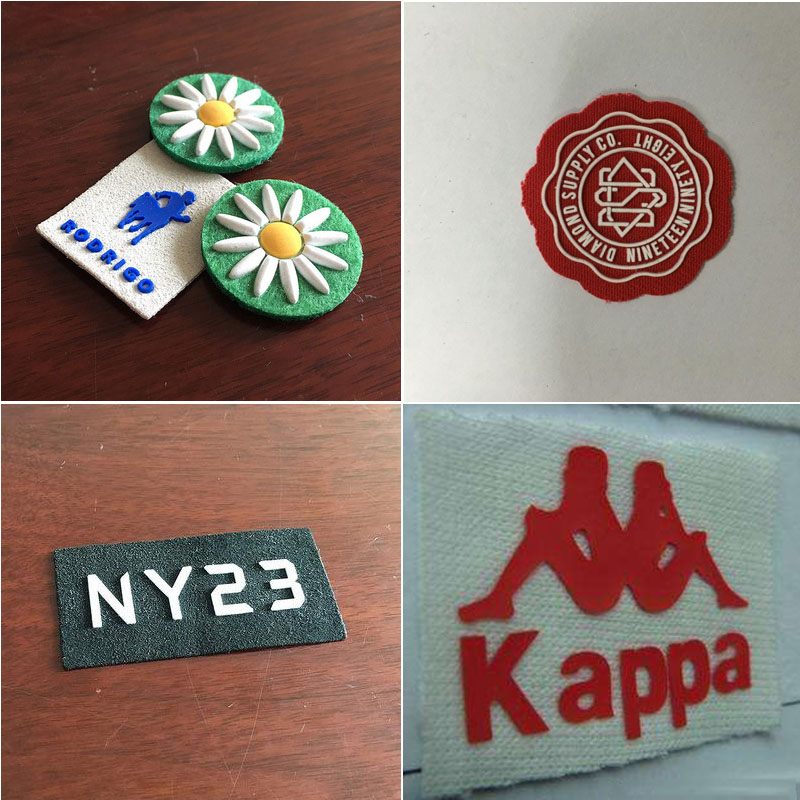Introduction
In the realm of modern branding and product customization, 3D logo silicone embossing machines stand as innovative tools that bridge functionality and aesthetic appeal. These specialized machines are engineered to create raised, three-dimensional logos and designs on a variety of surfaces using silicone, a material celebrated for its durability, flexibility, and resistance to heat, chemicals, and wear. Unlike traditional flat printing methods, 3D silicone embossing adds a tactile dimension to logos, making them more visually striking and memorable. From corporate merchandise to industrial parts, these machines play a pivotal role in enhancing brand recognition and product value across diverse industries.
Core Components of 3D Logo Silicone Embossing Machines
Embossing Mold System
At the heart of a 3D logo silicone embossing machine lies the embossing mold system, which dictates the precision and detail of the final 3D design. Molds are typically crafted from high-grade metals or durable polymers, with intricate cavities that mirror the exact shape of the desired logo. Advanced machines often feature interchangeable molds, allowing operators to switch between different logos or designs with minimal downtime. The mold’s surface finish is critical—polished molds ensure smooth, blemish-free silicone impressions, while textured molds can add additional depth or patterns to the logo.
Silicone Extrusion and Heating Unit
The silicone extrusion and heating unit work in tandem to prepare the silicone material for embossing. Silicone, often in a viscous liquid or paste form, is fed into the machine through a hopper or cartridge. The heating unit then raises the silicone to a precise temperature, typically between 100°C and 180°C, depending on the silicone type and desired hardness. This controlled heating softens the silicone, making it malleable enough to fill the mold’s cavities while ensuring it retains its shape once cooled and cured. Some machines incorporate temperature sensors and feedback loops to maintain consistent heat levels, preventing overheating or under-curing.
Pressure Application Mechanism
To achieve the distinct 3D effect, a pressure application mechanism presses the heated silicone into the mold with calibrated force. This mechanism can range from hydraulic or pneumatic systems in industrial machines to servo-driven electric systems in more advanced models. The pressure applied varies based on the logo’s complexity, silicone thickness, and the substrate’s material—for example, softer substrates like fabric may require lower pressure than rigid plastics or metals. The duration of pressure application is also carefully controlled; sufficient time must be allowed for the silicone to fill every detail of the mold before cooling begins.
Cooling and Curing Module
After the silicone is pressed into the mold, the cooling and curing module solidifies the material, locking the 3D shape in place. Cooling is often achieved through water circulation or air jets, rapidly reducing the silicone’s temperature to accelerate curing. For two-part silicone formulations, some machines may include mixing chambers that ensure proper catalyst distribution, triggering a chemical reaction that strengthens the silicone during curing. The curing time is optimized to balance production speed with the silicone’s structural integrity, ensuring the logo is firm yet flexible enough to withstand daily use.
Computer-Aided Design (CAD) Integration
Modern 3D logo silicone embossing machines leverage computer-aided design (CAD) integration to streamline the design-to-production process. Operators can import digital logo files (in formats like .stl or .obj) directly into the machine’s software, which then generates toolpaths for the mold and adjusts parameters such as pressure, temperature, and curing time. CAD integration allows for precise scaling of logos, customization of depth, and even the addition of intricate details like gradients or textures. This digital workflow minimizes human error, ensures consistency across multiple production runs, and enables rapid prototyping—operators can test and refine a logo design in virtual space before committing to physical production.
Key Technical Features
Variable Depth Control
One of the standout features of 3D logo silicone embossing machines is variable depth control, which allows operators to adjust the height of the 3D logo from a fraction of a millimeter to several millimeters. This flexibility is crucial for adapting to different brand requirements—some logos may demand a subtle, low-profile emboss, while others require a bold, high-relief design. The machine’s software often includes presets for common depths, and advanced models allow for gradient depth, where different parts of the logo rise to varying heights, creating a more dynamic visual effect.
Multi-Material Compatibility
While silicone is the primary material, these machines are designed to work with various silicone formulations, including food-grade, medical-grade, and high-temperature-resistant silicones. This versatility enables their use in industries with strict regulatory standards, such as food packaging (where logos on silicone spatulas or containers must be non-toxic) or healthcare (for equipment labels). Additionally, some machines can emboss silicone onto substrates like plastic, metal, leather, or fabric, expanding their application range beyond standalone silicone logos.
High-Speed Production Capabilities
Industrial-grade 3D logo silicone embossing machines are built for high-speed production, capable of completing hundreds or even thousands of logo embossments per hour. This efficiency is achieved through automated feeding systems, rapid mold changes, and simultaneous cooling and curing cycles. For example, a machine may feature a rotating carousel with multiple molds, where one mold is being filled with silicone while another is cooling, reducing idle time. High-speed production does not compromise precision, as advanced sensors continuously monitor and adjust parameters to maintain consistent quality.
Applications Across Industries
Promotional Products and Merchandise
In the promotional products industry, 3D logo silicone embossing machines are used to create eye-catching branded items. From silicone wristbands and keychains to phone cases and drinkware, 3D logos add a premium feel that sets products apart in crowded markets. For instance, a sports brand might use these machines to emboss its logo on silicone gym bottle grips, where the raised texture improves grip while reinforcing brand identity. The durability of silicone ensures the logo remains intact even after repeated use and washing, making it ideal for long-lasting promotional items.
Apparel and Fashion Accessories
The apparel and fashion sectors utilize 3D logo silicone embossing for adding distinctive details to clothing, footwear, and accessories. Silicone logos on jackets, hats, or sneakers are not only visually appealing but also resistant to fading, stretching, and washing—issues that often plague embroidered or printed logos. For example, luxury shoe brands may emboss their logos on silicone heel tabs, combining style with functionality, as silicone’s non-slip properties enhance wearer safety.
Electronics and Consumer Electronics
In the electronics industry, 3D silicone logos are used on device casings, remote controls, and charging accessories. Silicone’s insulating properties make it a safe choice for electronics, and its soft texture provides a comfortable grip. 3D embossed logos on smartphone cases or laptop sleeves add a tactile element that users can feel, reinforcing brand recognition. Additionally, the precision of these machines ensures logos fit seamlessly within the device’s design, avoiding interference with buttons, ports, or sensors.
Automotive and Industrial Equipment
Automotive manufacturers and industrial equipment producers rely on 3D logo silicone embossing machines for creating durable, high-visibility logos on parts like dashboard panels, gear knobs, and tool handles. Silicone logos in these settings must withstand extreme temperatures, vibration, and exposure to oils or chemicals—qualities that silicone naturally possesses. For example, a heavy machinery brand might emboss its logo on silicone grip covers for tools, where the 3D texture improves handling while branding the equipment as a mark of quality.
Advantages of 3D Logo Silicone Embossing Machines
Enhanced Brand Recognition
The tactile and visual impact of 3D silicone logos significantly boosts brand recognition. Unlike flat prints, which can fade or blend into the product surface, 3D logos stand out, making them more memorable to consumers. Studies have shown that textured designs are processed more effectively by the brain, increasing the likelihood of brand recall. For businesses, this translates to stronger brand loyalty and a competitive edge in saturated markets.
Durability and Longevity
Silicone’s inherent properties—resistance to UV rays, moisture, and abrasion—combined with the embossing process, result in logos that outlast traditional printing methods. 3D silicone logos do not peel, crack, or fade over time, even with frequent use or exposure to harsh environments. This durability is particularly valuable for products designed for long-term use, such as industrial tools, outdoor gear, or kitchen appliances, where the logo must remain legible and attractive for years.
Customization Flexibility
3D logo silicone embossing machines offer unparalleled customization flexibility, allowing brands to experiment with shapes, sizes, colors, and finishes. Silicone can be pigmented to match brand colors precisely, and the embossing process can incorporate features like matte or glossy textures, metallic flakes, or even glow-in-the-dark properties. This level of customization enables brands to align their logos with their unique identity, whether they aim for a sleek, minimalist look or a bold, vibrant design.
Cost-Effectiveness in Mass Production
While the initial investment in a 3D logo silicone embossing machine may be higher than in traditional printing equipment, it proves cost-effective in mass production. The ability to reuse molds, minimize material waste (thanks to precise silicone extrusion), and reduce labor costs through automation lowers the per-unit cost of producing 3D logos. Additionally, the durability of silicone logos reduces the need for rework or replacement, further driving down long-term expenses.
Future Trends and Innovations
As technology advances, 3D logo silicone embossing machines are poised to integrate more smart features, such as artificial intelligence (AI) for quality control—AI algorithms could scan each embossed logo to detect defects and automatically adjust machine parameters in real time. Additionally, the rise of sustainable manufacturing may lead to machines that use eco-friendly, biodegradable silicone formulations, aligning with brands’ environmental goals. Another emerging trend is the combination of 3D embossing with other techniques, such as laser engraving, to create logos with both raised and etched details, opening up new possibilities for creative brand expression.
Conclusion
3D logo silicone embossing machines represent a fusion of precision engineering and creative design, offering a unique way for brands to elevate their identity. By combining the versatility of silicone with advanced embossing technology, these machines produce logos that are not only visually striking but also durable, customizable, and cost-effective. As industries continue to prioritize brand differentiation and product quality, 3D logo silicone embossing machines will remain indispensable tools, driving innovation in how logos are designed, produced, and experienced by consumers.
Post time: Jul-22-2025

